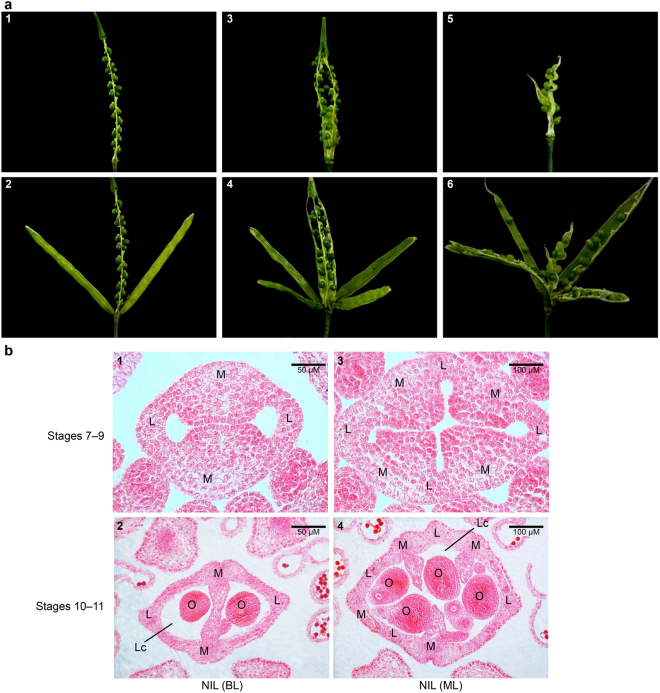Figure 2.
Comparison of silique phenotype between multilocular and bilocular plants in BC3F5 generation. (a) An anatomical diagram of a bilocular and a multilocular silique in BC3F5 plants. (1–2) A normal B. juncea silique with two valves (2), or with both the valves removed (1), and two rows of seeds in it. (3–4) A multilocular silique with four valves (4), or the four valves have been removed (3), and four rows of seeds in it. (5–6) A multilocular silique possessing an additional pistil in the silique (6), an additional gynoecium inside the silique that has been peeled, and seeds are in and around the gynoecium (5). (b) Cross-sections of the gynoecium from the bilocular and multilocular plants at different stages of development. (1) Bilocular plant of BC3F5, stages 7–9. (2) Bilocular plant of BC3F5, stages 10–11. (3) Multilocular plant of BC3F5, stages 7–9. (4) Multilocular plant of BC3F5, stages 10–11. M, medial region; L, lateral region; O, ovule; Lc, locule.

